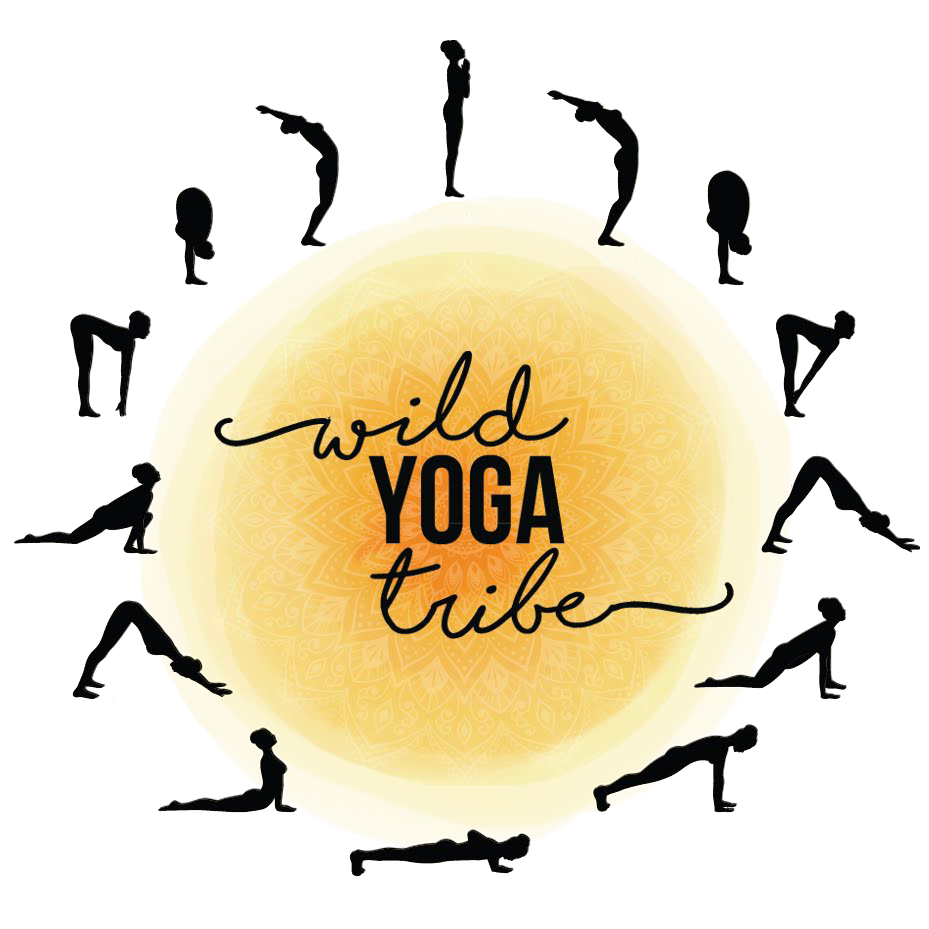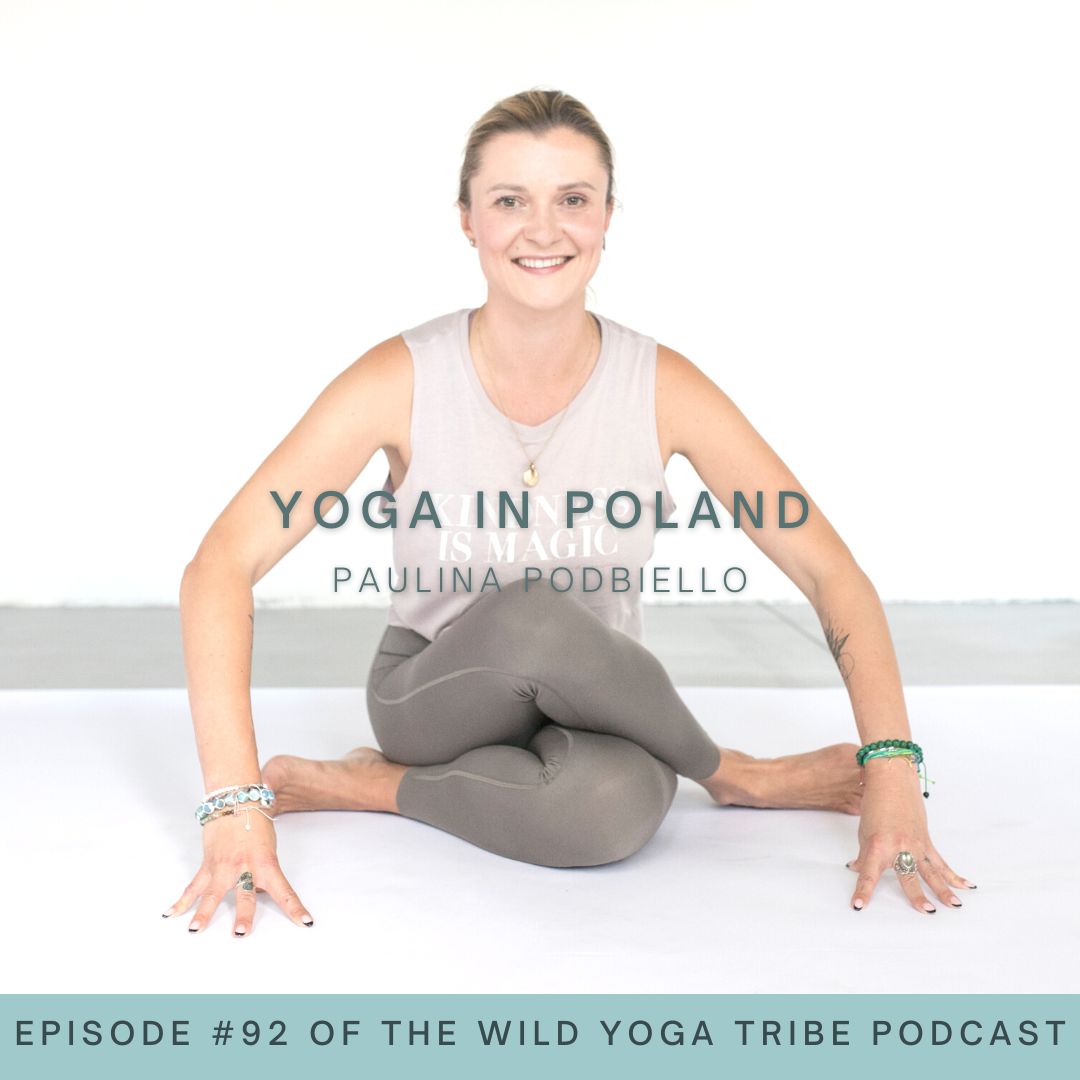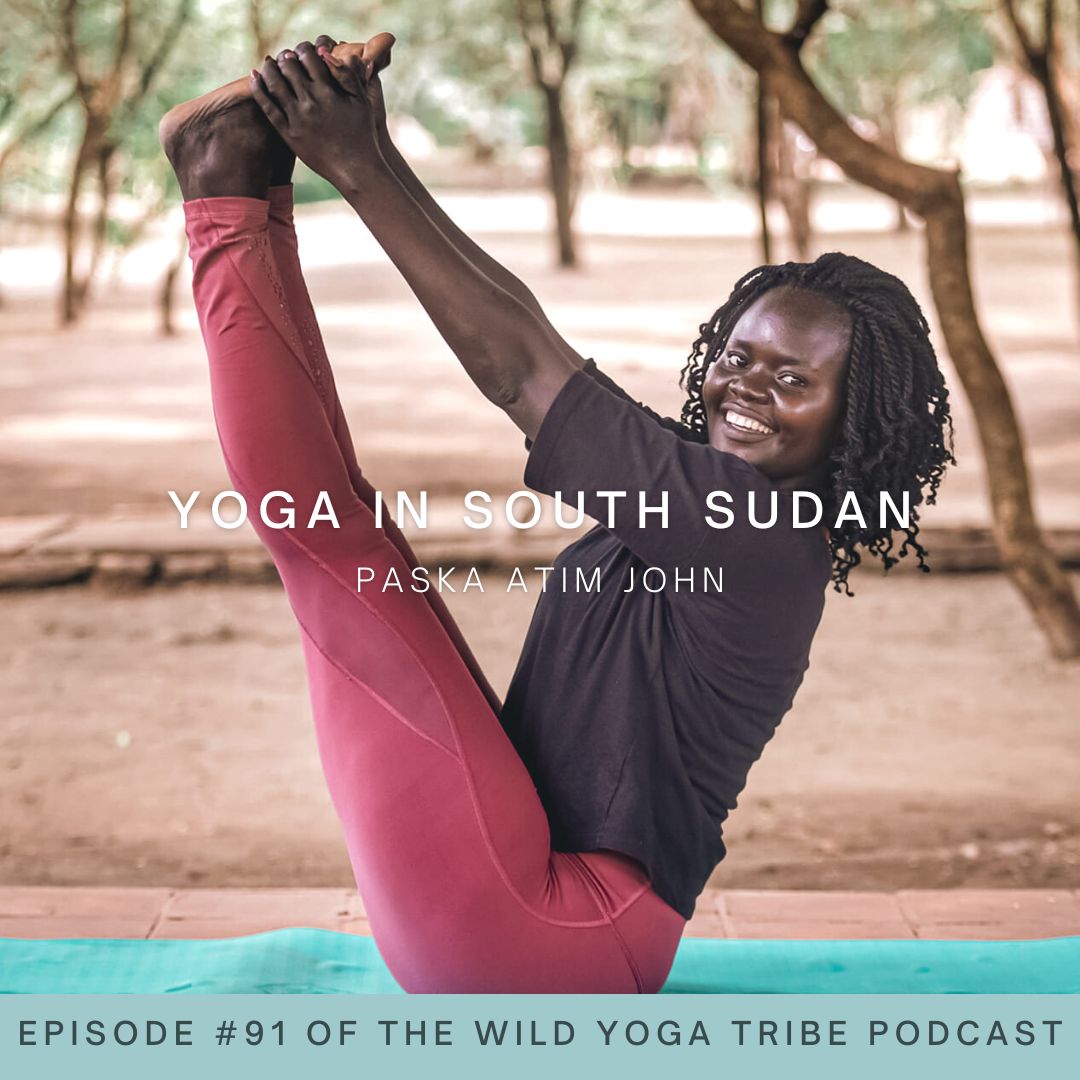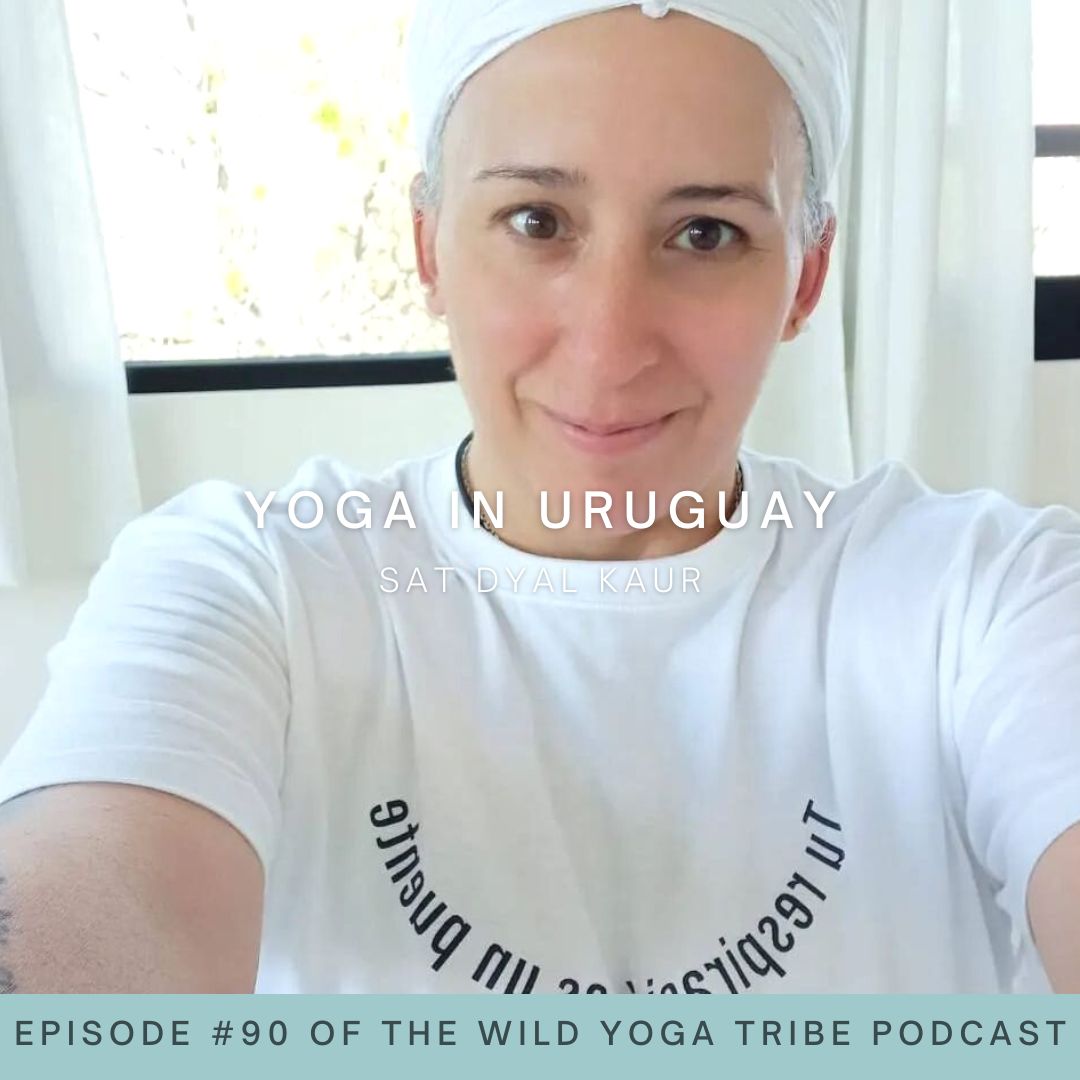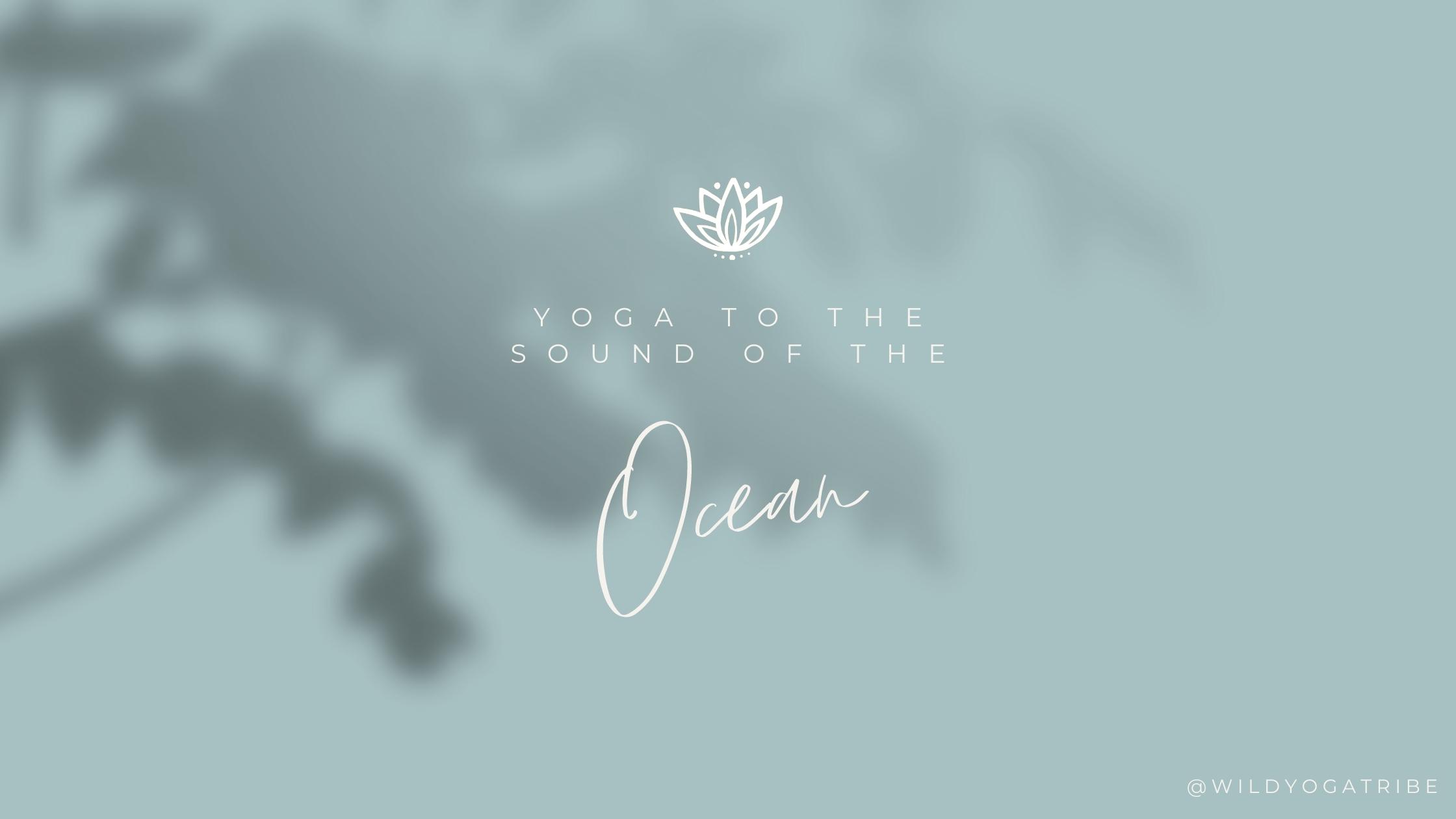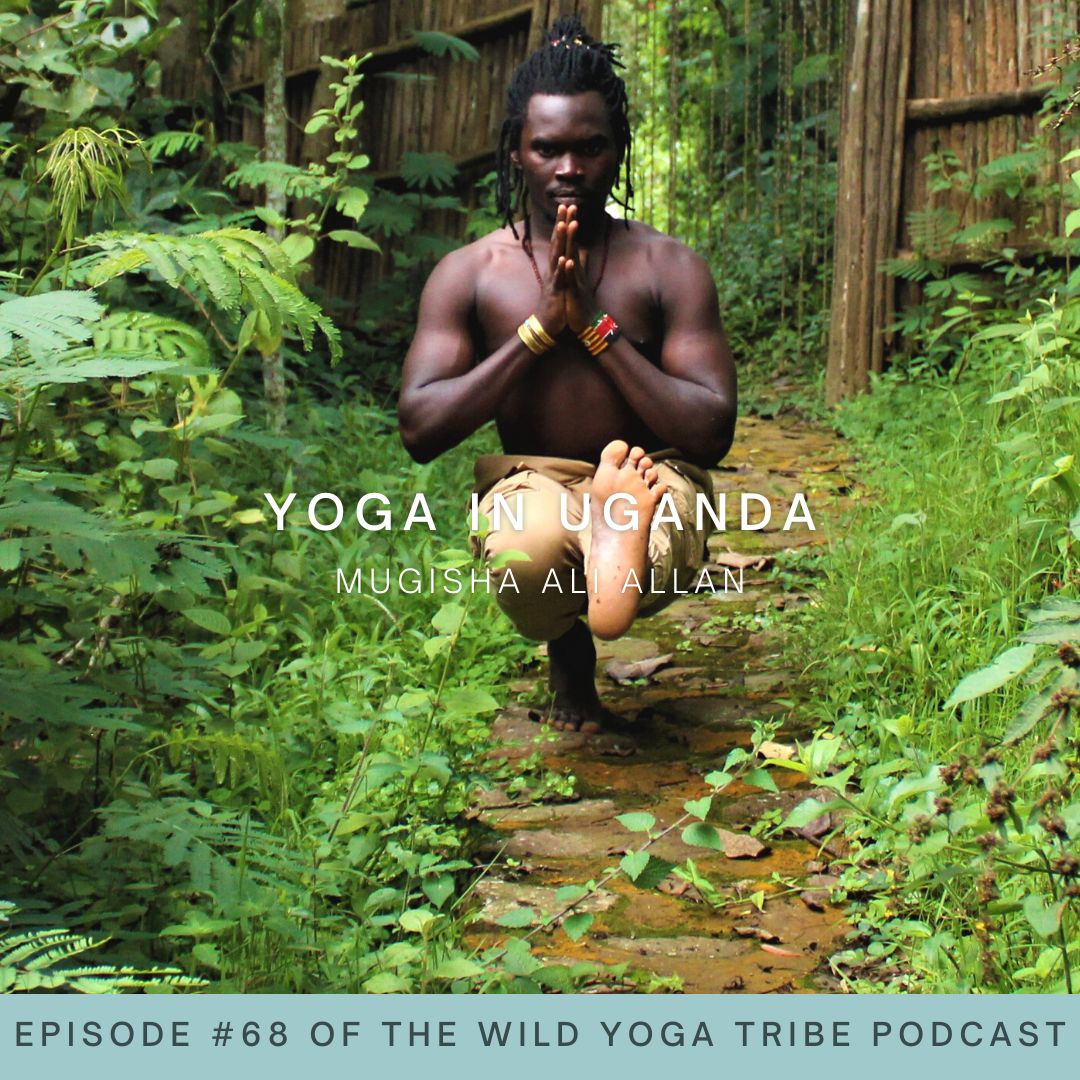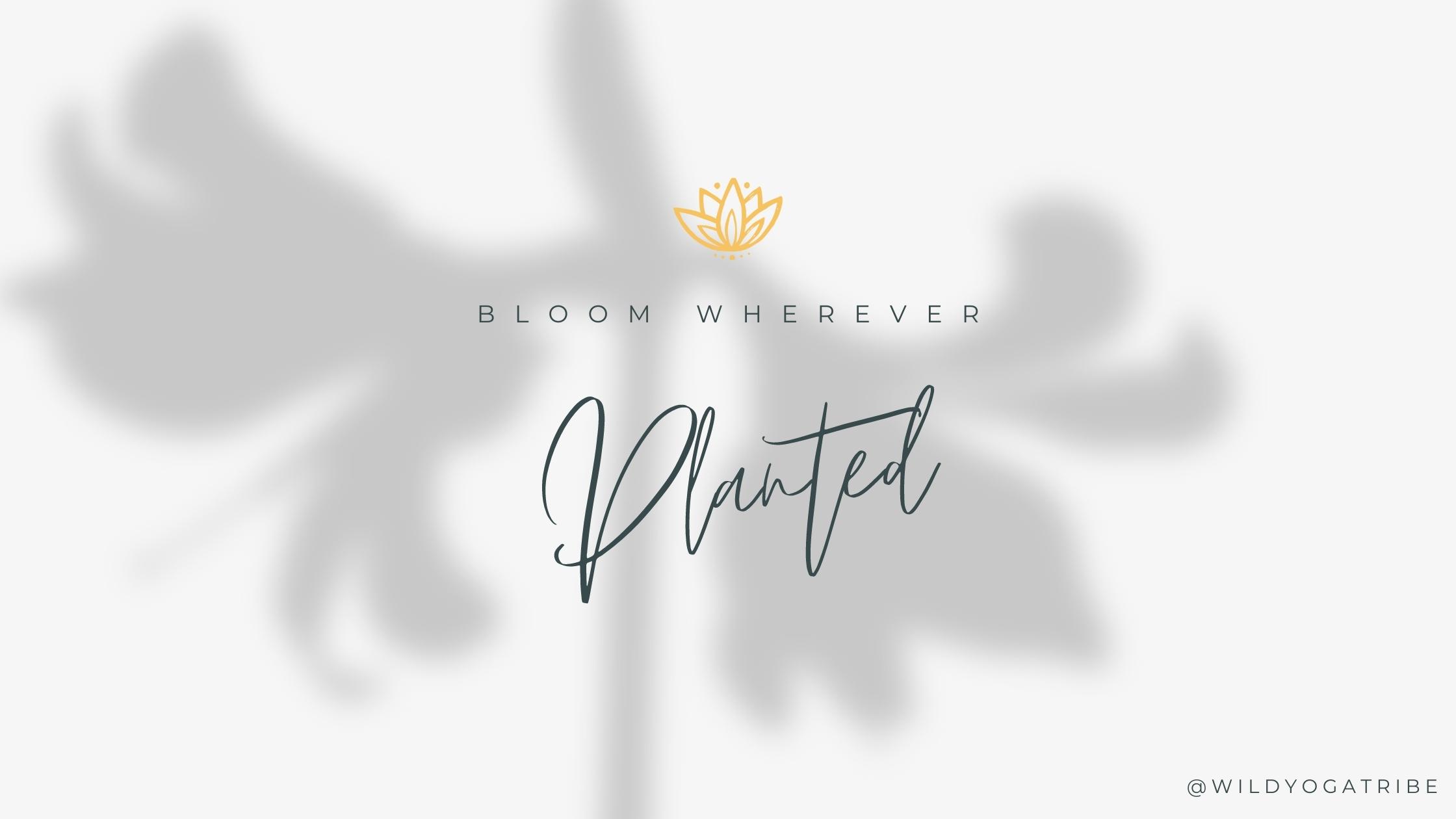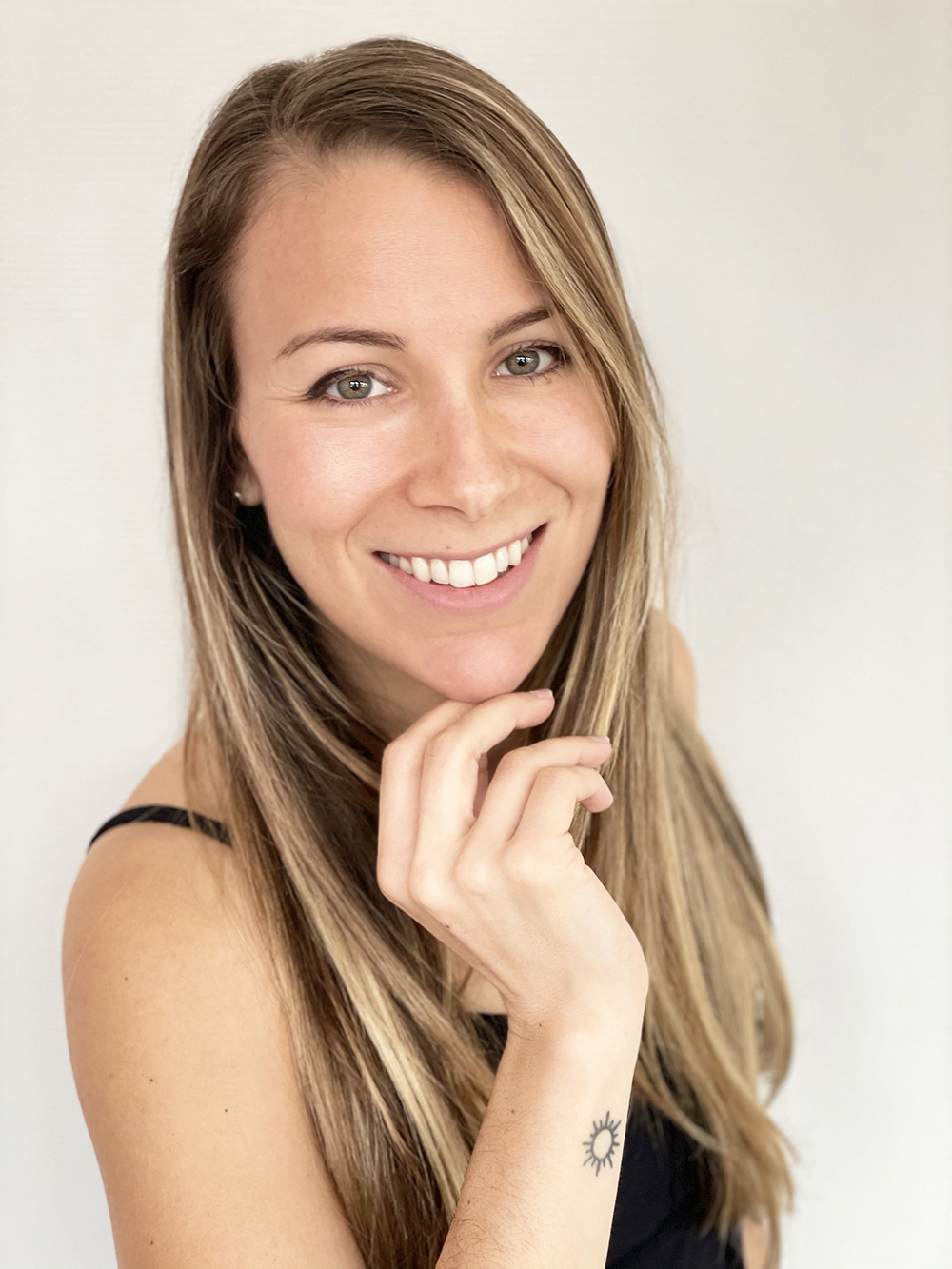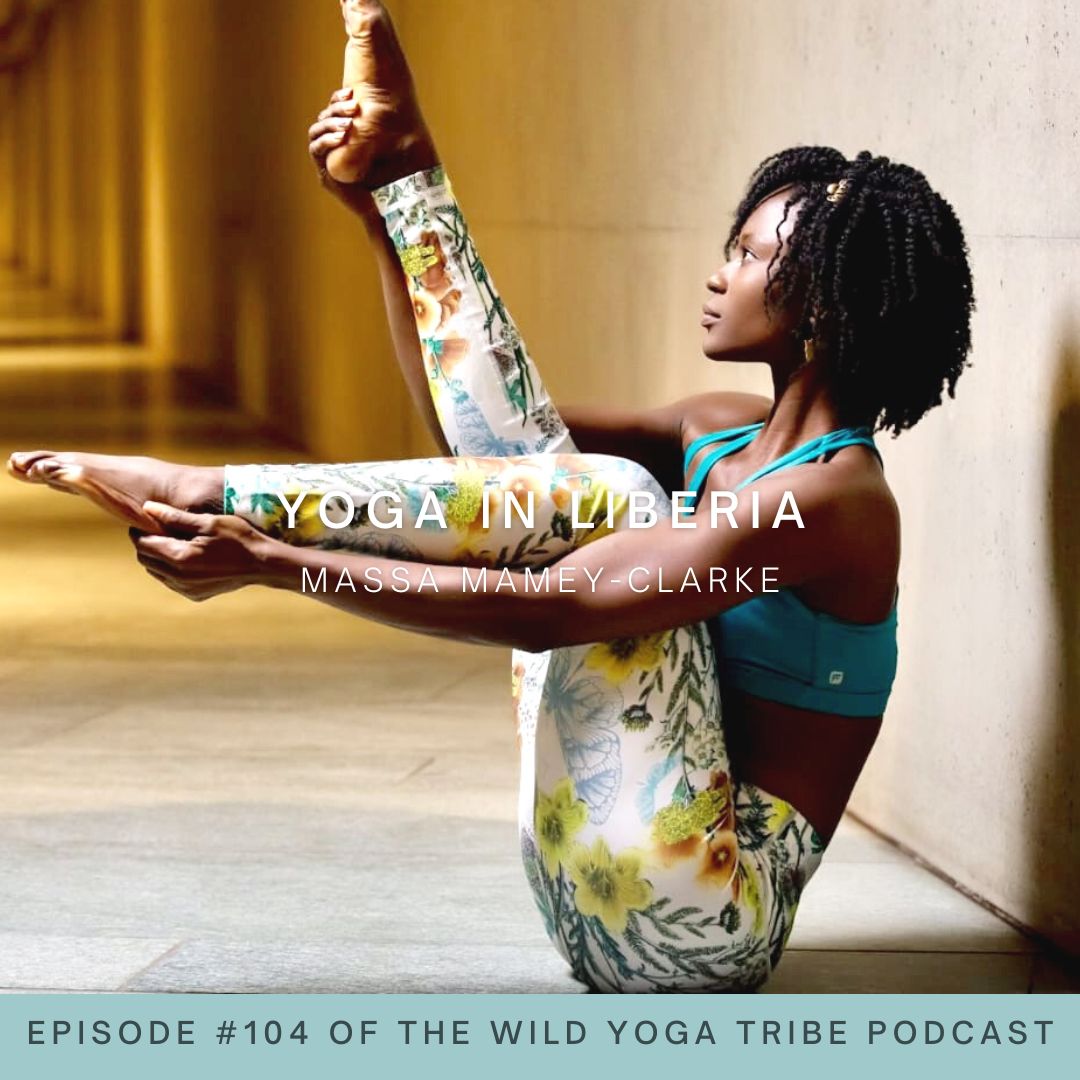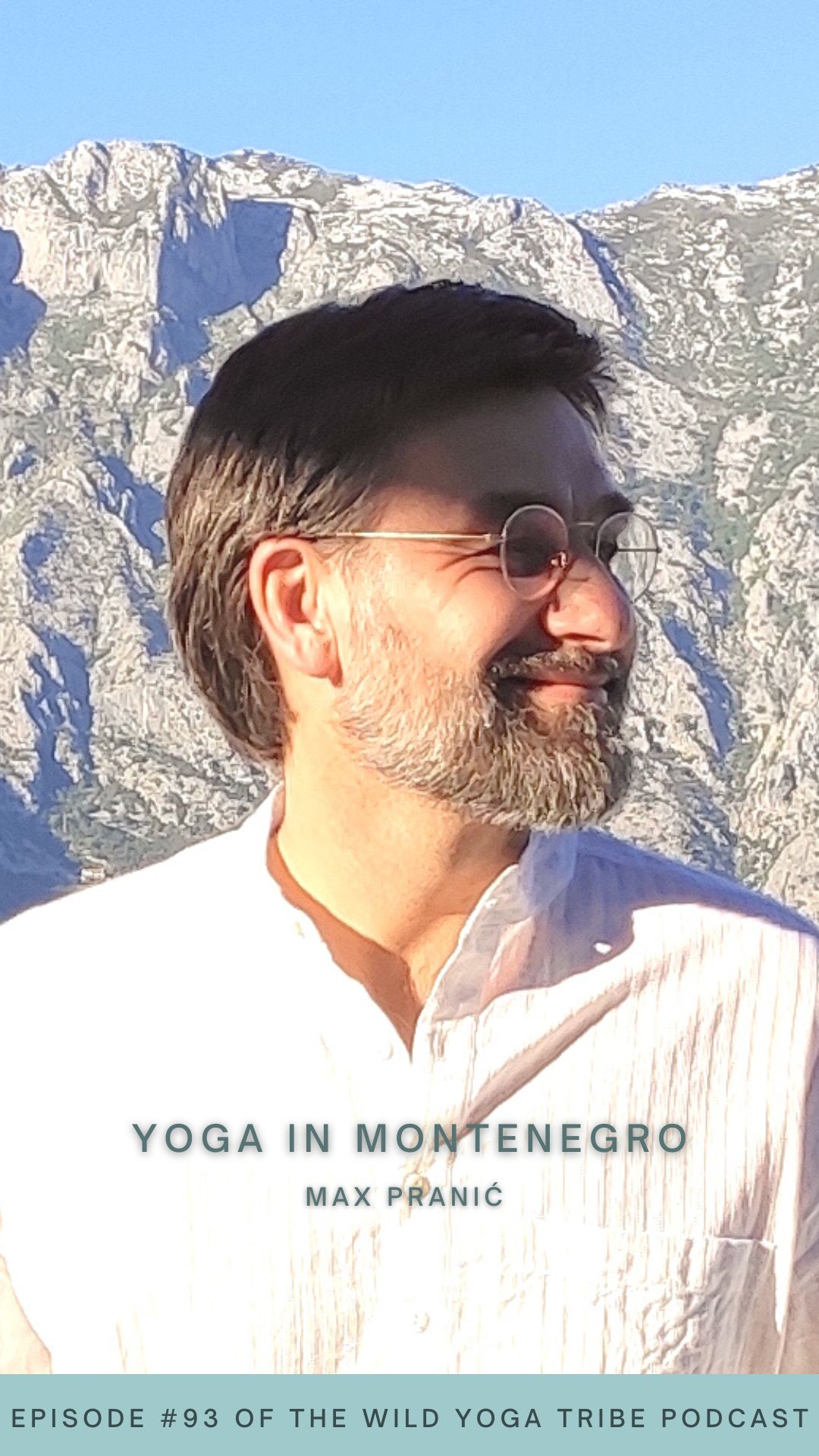
EPISODE #93 – YOGA IN MONTENEGRO
Meet Max Pranic
Meet Max Pranić, yoga teacher from Montenegro, who shares his profound journey with real yoga, embracing its authentic principles and practices. Welcome to yoga in Montenegro, where Max’s teachings will help you discover the true essence of yoga centered around union, self-discovery, and inner connection.
Wild Yoga Tribe Podcast Episode #93 – What is Real Yoga? – Yoga in Montenegro with Max Pranić
Welcome to Episode #93 of the Wild Yoga Tribe Podcast! My conversation with Max Pranić, a yoga teacher from Montenegro, was fascinating as we discussed the the distinction between real yoga and what is often referred to as yoga. Max comments on the global yoga supermarket, and how yoga can be treated now like a hamburger. I’m sure this conversation is one that will give you a lot of food for thought. If you’re looking to tune into a podcast episode that is all about yoga in Montenegro then this is the conversation for you.
Tell me more about Max Pranic
Max Pranić has been practicing and teaching yoga for over 20 years in various international settings, with his home base in the beautiful Adriatic country of Montenegro. He conducts regular classes and private training sessions at Yogaboka studio in Kotor Bay, PMYC Sports Club in Porto Montenegro, Tivat, and Chenot Espace Spa at One & Only, Portonovi.
Max’s teaching approach is rooted in slow and gentle Hatha yoga, incorporating elements of Kriya and Raja yoga. His classes are suitable for practitioners of all levels, including beginners. As students progress, Max gradually introduces various pranayamas, dharanas, kriyas, mudras, bandhas, and other tools of a more subtle yoga practice. He also teaches traditional Indian Tantra yoga.
What to expect in the Yoga In Montenegro episode of the Wild Yoga Tribe Podcast
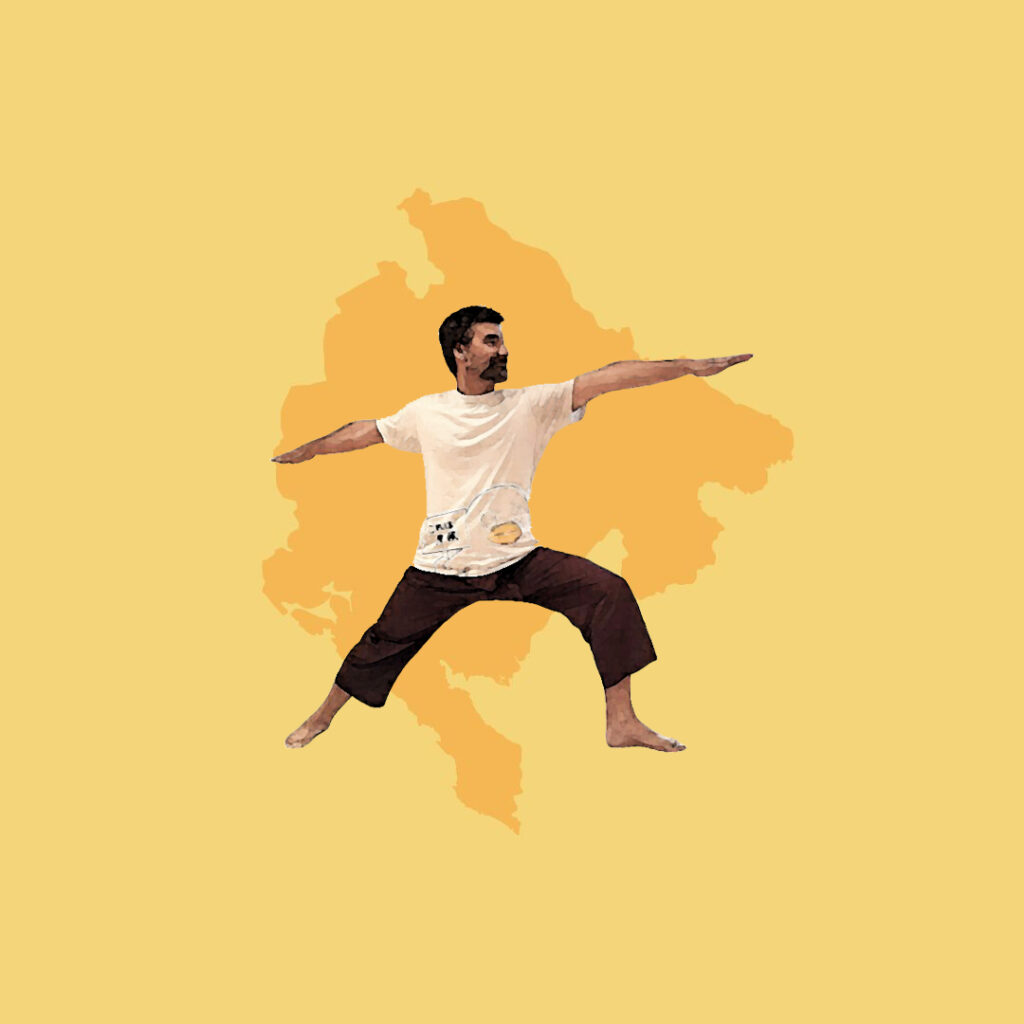 Max Pranić, an experienced yoga teacher from Montenegro, shares his profound journey with yoga and its authentic practice. He begins by clarifying that yoga, for him, is a sadana, a practice that involves the connection of body, mind, and breath. Before fully diving into traditional Indian yoga, Max explored various other practices like karate, kung fu, and zen meditation. However, it was yoga led him on a path of teaching and practicing yoga for over 20 years.
Max Pranić, an experienced yoga teacher from Montenegro, shares his profound journey with yoga and its authentic practice. He begins by clarifying that yoga, for him, is a sadana, a practice that involves the connection of body, mind, and breath. Before fully diving into traditional Indian yoga, Max explored various other practices like karate, kung fu, and zen meditation. However, it was yoga led him on a path of teaching and practicing yoga for over 20 years.
Max’s insight into yoga came when he studied with authentic Indian teachers during his years spent in India. His experiences studying with accomplished Indian masters enriched his understanding of yoga’s true essence. He particularly emphasizes the significance of having a guru or spiritual teacher, which is more than just a technical or physical instructor. True yoga goes beyond the mat; it is a way of life, as all of life is yoga.
The discussion delves into the widespread popularity of yoga in the West. Max expresses gratitude for yoga’s accessibility to people worldwide but also highlights some of the challenges. He notes that while yoga has become prevalent, it has also been diluted and misunderstood— which is especially notable with Tantra Yoga. People often miss the profound depths that the practice offers.
Max emphasizes that yoga is not about achieving something but about unlocking the hidden potentials within oneself. It involves a non-violent approach (ahimsa) towards oneself and others. Yoga helps individuals integrate their physical, mental, and spiritual aspects, leading to a state of bliss (Ananda) and inner connection.
Max provides valuable insights into the authentic roots of yoga and how it originated from tantra, which involves working with energies. He recommends studying classical texts, such as the Hatha Yoga Pradipika, to understand the true essence of yoga and incorporate deeper practices that extend beyond asanas. Max’s definition of yoga centers around the concept of union—with oneself and with higher energies—which ultimately leads to reconnection and integration.
Curious? Tune into the whole episode to learn more about yoga in Montenegro!
Favorite Quote From Max Pranić
“In classical and traditional yoga, you have a lineage and you feel this lineage behind you. My teacher was an instrument, a tool to pass this knowledge and I also tried just to pass it by and I don’t create some new stuff. I just follow what’s been tested for centuries.”
What’s in the Yoga in Montenegro?
Feel like skimming?
Being invested in the authenticity and integrity of yoga practice
The distinction between real yoga and what is often referred to as yoga
The global yoga supermarket and the treatment of yoga as a product
Why is ananda (bliss) an integral part of a yoga practice?
The importance of ahimsa (non-violence) in yoga
Connect with Max Pranic
https://www.instagram.com/maxpranic/
https://www.facebook.com/maxpranic/
Support the podcast:
https://www.patreon.com/wildyogatribe
Want more?
https://wildyogatribe.com/thepodcast/
Everything you need is just one click away! Check out all the resources here: https://linktr.ee/wildyogatribe
PODCAST TRANSCRIPTION
Read + Reflect + Respond
Wild Yoga Tribe Podcast Episode #93 – Yoga in Montenegro Transcript
[00:00:00] Lily Allen-Duenas: Namaste family and welcome back to the Wild Yoga Tribe Podcast. Today I am so excited to welcome Max Pranić onto the show today. He’s a yoga teacher from Montenegro who has over 20 years of experience practicing and teaching yoga internationally. Max teaches Haha yoga and incorporates elements of kriya and Raja Yoga, and he also teaches traditional Indian tantra yoga. I am so excited to talk to Max, hear his story and dive into his teaching methodologies and philosophies. Thank you so much Max, for being on the show with me today.
[00:00:38] Max Pranić: Hi. Nice to meet everyone online. Thank you. Thanks for inviting me.
[00:00:43] Lily Allen-Duenas: Yeah. So Max, I would love to hear about your story, how yoga first came into your life. How did it fall on your radar? What got you interested in becoming a teacher?
How did yoga first come into your life?
[00:00:53] Max Pranić: I believe we should first clear the terminology because, people call different things yoga, and for me, yoga is basically a sadana. As they say in Sanskrit. That’s any practice connected to Body Mind, this kind of physiological practice. So if we see this way, then I can say I’ve been interested quite longer than I teach Indian, traditionally yoga, because I’ve been doing a bit of karate, a bit of kung fu, a bit of zen meditation before I went into yoga. Because these days usually, when they say yoga, they see [00:01:30] Asana, practice.
Again, as I said, it depends how you see it, but if speaking of more traditional yoga, then I’ve been doing it over 20 years and teaching as well. First of all, I was just doing it for myself. So as I had some experience before in martial arts and shared the basic philosophy concept of chi or prana in Indian tradition as prana in Chinese tradition, it is chi or chi energy. So we work with energy. We don’t work just with muscles.
I’ve also studied some philosophy before, some western philosophy. Then I got interested in Eastern philosophy and different streams of that. Indian philosophy that definitely has a huge depth and big history. Then I got into practice. I met some right teachers, some western teachers, but then I was lucky to meet some real Indian teachers. That’s where I think my insight into yoga happened. Real yoga.
[00:02:34] Lily Allen-Duenas: Max, I would love to hear more about your experiences studying with these accomplished Indian masters and these schools, and how those experiences also shaped your understanding of yoga as genuine yoga or real yoga.
What was it like to study yoga in India?
[00:02:48] Max Pranić: I was lucky enough to meet some right teachers, I believe. Coming to India first time, it was in the beginning of two thousands. I had some hints where to look [00:03:00] into where to go. Then later I was more lucky to meet the real teachers who became my teachers.
But first I spent some time in different, in a couple of ashrams, for example Shivananda Ashram in South Kerala. To be honest I mean it was an interesting experience, but I didn’t like the system that much, to be honest, because they have their own system, 12 Asana and a lot of the Vedanta teachings and all that.
Later on I met my main teacher. You can even say a guru who I’ve been practicing with and living with him at his house for some time. Altogether I spent quite a few years in India. Not months. That was my main teacher, Shiri Shari, he passed away already.
He was an old man already. He left his body in Varanasi. I was living on the Ganges, that was quite a special experience, and he accepted me as a disciple. So that was quite an honor and it’s a responsibility for a teacher and for a disciple as well, because he was passing knowledge directly. Not in a group, not in a class. One to one and passing a shakti part that’s energy transmission with mantra and all that. So it’s a very classical approach to yoga studying, let’s put it this way.
[00:04:27] Lily Allen-Duenas: Wow. I didn’t know you’d spent years in India [00:04:30] and getting to live with your guru, and that’s amazing.
Explaining what a guru is
[00:04:33] Max Pranić: Sorry to interrupt. When somebody says guru, there are a lot of misconceptions and esoteric stuff attached to it, this new age stuff, when somebody in the west, especially some people call themselves guru. No, that’s just a guru is a spiritual teacher, basically. It’s not just a technical teacher or yoga instructor in a studio or like a university teacher. It is about yoga, but it is yoga as a practice.
[00:05:02] Lily Allen-Duenas: It’s about life
[00:05:04] Max Pranić: As well. Yeah, all life is yoga as Sri Aurobindo a famous saying of Sri Aurobindo all life is yoga. It’s not just on the mat, obviously.
[00:05:13] Lily Allen-Duenas: Yeah. I couldn’t agree more. It is, yoga is off the mat as well, and I know something max that you’re very passionate about. Is how yoga has spread all over and has transformed now away from what it really is. So as someone who is just deeply invested in the authenticity and the integrity of yoga as a practice, as a lifestyle, what are your thoughts on how widespread yoga is in the West? The distinction between real yoga and what is often now referred to just as yoga?
The authenticity and the integrity of yoga as a practice: What is real yoga vs. yoga?
[00:05:48] Max Pranić: First of all let me say that I try to be dispassionate, not so passionate about anything. That’s one of the approaches of yoga, to stay dispassionate.
[00:05:58] Lily Allen-Duenas: Okay.
[00:05:59] Max Pranić: [00:06:00] To kinda like to keep a philosophical mindset and attitude. I try not to put a conflict into this and not to be critical.
There are all forms of practice and, definitely, it’s widespread and I’m glad it’s widespread. It’s not only in the west, it’s spread in the east, not just in India and that’s all, now it’s popular.
I saw you had some interviews even with Afghan yogis. It’s quite amazing, like how it spread and I’m glad that it spread. But the only thing is sometimes it, with this, it became. Pretty shallow quite often. It’s again I don’t want to be a judge or a boring moral guy who says, okay, this is not right.
Yoga, it’s just for me it’s a pity that people take so little from this yoga just from the surface because it has such huge depths. It’s usually either or in Western except for the concept of yoga. It’s usually a concept of yoga. Here is yoga. Yogis do asana, us. Here are Buddhists. They meditate. Here are like, new age circles and esoterics. They do something weird as well, especially that’s it comes to western tantra. That’s really the biggest misconception. And yoga is just yoga.
It’s just a practice. You can do the same practice, but make it much deeper when you do it. [00:07:30] Because when you, even starting with the physical practice, with asanas, with different kriyas, movements, I’m not talking about subtle techniques, but just major balancing, working in a class, I teach to a very different audience.
My approaches are different as well, depending on the class, on the people I teach. Again, like you can just do even working, like I work with tourists and clients of expensive hotels. I don’t definitely don’t teach them Indian traditional tantra, right? It’s more hatha classes, but still I try to show that it’s not about muscles like a fitness class, right?
It’s about energy flow in the body, about connecting breath, movement, or static position, connecting body, breath, and mind trying to put it together to synchronize. That’s the whole point of practice. Otherwise, it’s just another form of fitness. I prefer when they come to yoga class, they do yoga and when they come to the gym, they do fitness and I think it compliments each other as well.
Nothing wrong with working with the machines, with the fitness instructor. Plus now fitness really developed a lot. I have some friends who are fitness instructors and they teach smart fitness like understanding all new concepts about muscles and all that. Yoga is definitely not muscles [00:09:00] only.
[00:09:00] Lily Allen-Duenas: Yes, it’s definitely not just about the muscles and I do feel that often in the west can be just such a gateway I hear about. Over again, students are coming to classes wanting to work on something physical, even if it is back pain. There is a goal that has to do with the physical body. That usually is the invitation, how to show up to class, right? That’s the reason they come. But as it slowly unfolds and over time and through the instruction of the teacher, hopefully there’s guidance towards those subtler layers.
The many layers of yoga
[00:09:32] Max Pranić: Yeah, sometimes, quite often people start with the body obviously. They start with some issues, with some problems and I always recommend to see a doctor first, though. When you have a real problem, better see the doctor. Don’t start with yoga, because with yoga you can even worsen your problem. If you come to some hatha class and there is not enough alliance and or I would say even Ashtanga Vinyasa. Or something like that, this kind of style, which is very dynamic and you can easily get an issue with the body, especially if you are not 20 years old anymore.
Very often people come in the west, when I say in the west, around the world. Not in India. When people come to yoga, usually they’re not seven years old as traditionally in Brahmin families, right from seven, from eight. They were taught yoga when they’re really flexible, no issues, no stresses yet.
These days I have a lot of student clients [00:10:30] who are over 40 and over 50. They need yoga therapy, not intense ashtanga vinyasa or hatha yoga, but it doesn’t mean that they cannot do yoga. Yoga is actually we put it on our website, the saying of famous teacher Desikachar, he’s not that much. Maybe famous as Iyengar or Pattabhi Jois, but he was a son of Krishnamacharya, one of the gurus of yoga of the 20th century. Basically yoga spread in the West from him. Desikachar, he was more into yoga therapy. That’s his saying that it sounds approximately like: let’s not adjust a person to yoga, but adjust yoga to a person.
So meaning, you have to consider the condition this person is in physically and mentally as well. That definitely goes well with individual practice, because in a group you cannot really work like that. You work with a group and with such an approach when you adjust the practice to the person considering all the issues. We all have issues. Really. I haven’t seen a single person without issue, it builds up through our life. This is important to consider the condition, to consider Ayurvedic dosha a person has, and the practice can be adjusted according to this.
That’s ideal or if it’s done in the group, as I said it’s [00:12:00] it’s just adjusting to the level of the people in the group. Physical, and also like age and all that. So that’s important. But again, there are like many more layers in yoga.
And when we speak about real yoga and not real yoga, I don’t like when yoga became like a hamburger like a minced meat, simplified food, let’s put it this way. Even doing physical practice, you can work with the breath, with the mind already. And then when you go more advanced, advancing for me and for I believe any authentic yoga teacher would be not going into acrobatic and all the headstands and all that. So it’s because it’s not acrobatic and gymnastics and aerobics. Advancing in Indian traditional approach to yoga means going into more subtle techniques, more inner techniques working more with the visualizations, with the breath, with the mind work. And it’s not just pure meditation.
It’s a lot of different breathing techniques, bandhas and all things. And quite often teachers don’t even know them these days.
[00:13:10] Lily Allen-Duenas: Yeah, that is the kind of epidemic of that, of just the Asana…
Instagram and Yoga
[00:13:14] Max Pranić: Instagram helps with that. nstagram is the opposite of yoga because it’s quite a lot of show off there on social networks.
[00:13:24] Lily Allen-Duenas: So true, but also it’s so hard to really photograph pranayama or bandhas [00:13:30] in a way that would translate, in a way that would be successful on that medium. I think the medium is meant for showing off, turning bodies into pretzels. That’s what the platform itself wants you to post.
[00:13:43] Max Pranić: Yeah, that’s why Brahmins never wanted to popularize yoga. Brahmin the cast, original cast where the yoga came from, not just centuries. Thousands of years they’ve been developing these techniques and it was transmitted from brim to Brahmins.
It was quite in a western worldview. It would be a snobbish approach. They wouldn’t give it to other casts, this knowledge because it was the sacred knowledge and yoga, meaning not just asana here for sure.
[00:14:11] Lily Allen-Duenas: I’m grateful that it has been given to the masses. I’m grateful that anyone and everyone can have access to this. Just the accessibility, whether it’s on YouTube or whether it’s at a studio. It is all over the world, which is a focus of the podcast and of me being a citizen of the world. I know Max you are as well.
There’s so much gratitude I feel, but I do understand that it is a sacred practice that has been treated now in a way where it’s not being treated as sacred anymore.
Yoga is now treated as a product
[00:14:42] Max Pranić: It’s treated as a product and we’re all in the co of yoga in a way. We earning a living if you’re a professional teacher you become a commercial person. Wanted or not, you participate in this global yoga supermarket. I’m also grateful that it’s open to the world and a [00:15:00] lot of techniques are open and still a lot of real deep techniques are closed.
The importance of reading yoga texts from the source
[00:15:05] Max Pranić: Quite many techniques are still not known by the majority of even teachers. Sometimes people overlook things because quite much is said. For example, if speaking about real yoga or not real yoga, let’s look into the sources. I was taught by the teachers, but also they were recommending me to read the sources and I have always been doing that. I’ve been reading quite many medieval and even ancient sources. Not just yoga sutras of Patanjali but speaking about Practice. We do, we all do. Nowadays it’s more based in Hatha tradition. We can look into Hatha Yoga Pradipika which is a famous mid centuries text on yoga.
Very influential, very important. I would recommend to all teachers who are here who would probably be quite many yoga teachers, listen to your podcasts. So I would definitely recommend them to read it, not just to read some modern books, but to read the source. Read the ancient source, and you will see it’s already there. It’s called Haha, yoga pdi, right? It’s all very well known. But it has a lot of tantra there. By the way, real tantra is not fake western stuff.
How tantra is being misused
[00:16:21] Lily Allen-Duenas: Very good point. Yes. Glad that you also brought up how tantra has been now taken by the west and turned into something, it’s not. It’s [00:16:30] very uncomfortable knowing how it’s been taken, and misused.
[00:16:34] Max Pranić: It is just funny to me how like all these tantrics. I mean, we have a yoga studio here in Montenegro near the quarter. It’s quite popular and sometimes teachers get in contact with us and they suggest they do. Because they probably see something in my profile or something. I’ve been doing yoga, philosophy, yoga and tantra philosophy.
That’s also what I do online as well Offline for teachers as well, because I, I’m qualified to certify yoga teachers. Sometimes I participate in that. Basically they see the word tantra. It hits the mark for them. Then they contact us, they suggest couples and all this sexual practices, something, Let’s do it in your beautiful studio.
Something like that. We always respond, no we stick with the traditional approach to tantra. Sorry, we’re not going for that. Thank you. Some other place, please. Because actually not many yoga teachers realize that yoga is a tantric practice. It came from Tantra directly by Garashanat by Matsyendranatha that those famous yogis, and they are the fathers of modern yoga. You can say modern, like mid centuries, 10th century. That’s already modern yoga.
[00:17:49] Lily Allen-Duenas: Do you want to expand on that a little bit? How all yoga is tantra?
All yoga is tantra
[00:17:53] Max Pranić: It comes from Tantra because it’s working with energies. Yoga sutras from Patanjali that’s Raja [00:18:00] Yoga, classical Raja Yoga.
In yoga teacher training, they all go for this text. Usually if it’s a good yoga teacher training, they study Yoga Sutra of Patanjali, which is strange to me because they usually study hatha in yoga teacher training. When I say hatha, it’s all, it’s vinyasa.
Basically it has its roots in Hatha. And Hatha yoga is a tantric practice in itself because it comes from the concepts developed by Tantra and it’s by those original yogas, rishis of mid centuries. It was transformed from tantric practices because tantra involved a lot of ritual as well.
It was a bit more kinda simplified in a way. Not really simplified, but kind like they got rid of rituals and made it more technical, a bit more dry in a way. I can read you hours of lectures about that, but I don’t.
[00:18:55] Lily Allen-Duenas: Don’t need.
[00:18:57] Max Pranić: Yeah. Yeah. My point is that if you read Hatha Yoga Pradipika, which is, most of the teachers they’ve heard about this text and its classical Hatha yoga text.
You will see a lot of tantra there because real tantra is basically energy work and and. By the time it’s kinda like yoga developed from there teachers came to understand that the approach of classical Raja yoga doesn’t work. Yoga sutras, they worked. It’s really hard to work with your mind when your body is not [00:19:30] ready. It’s a very modern concept because all modern people are too stressed, too stuck with the bodies, with the minds. First you need to unlock them to let the energy flow. Then only you can start working with the mind. So basically meditation, which is an integral part of yoga. It only might happen in an unlocked, purified body.
If your body is blocked, no meditation will happen. And if speaking about goals of yoga, Samadhi is like the eighth step of yoga, is one of the main goals of yoga. Basically you become one with yourself first you integrate, your body, your mind, and then you get integrated with the higher energies.
But that’s not going into there.
[00:20:20] Lily Allen-Duenas: I’m glad we went into it this far. I really appreciate you giving that big broad brushstroke of what you meant. We do have a lot of yoga teachers who tune in, so I’m sure they’d find that interesting. One other thing, an element I really want to ask you about Max is I wanted to ask you how you incorporate the element of Ananda and just for our listeners, that would translate in Sanskrit to bliss or joy.
There’s no English equivalent, but that’s the best we can do because I know that’s an element of Ananda that you incorporate in your teachings and in your practice. Why do you feel that is an integral part of the authentic yoga practice?
Why is a nanda (bliss) integral part of the authentic yoga practice?
[00:20:58] Max Pranić: There is a famous [00:21:00] saying in Sanskrit coming from Vedas from Rig Veda “sat chit ananda”, that’s the concept of higher consciousness. Basically. Its SAT is Satya truth, chit is mind or or consciousness. Ananda is a bliss. That’s basically the attributes of Shiva or one of the gods of main gods of Indian Pantheon.
Or I’m not going too much into the esoteric, I just wanted to say that Ananda is a really important part because that’s the attribute of our consciousness as well. Through yoga, we’re not changing ourselves. We’re just uncovering things. We already have it. By birth we have a lot of things which are hidden in us. A lot of potentials. And we want to unlock them through yoga. That’s the whole point of yoga. it’s really important to have this non achievement attitude. Ananda doesn’t come without ahimsa. Ahimsa is a nonviolence, and that’s one of yamas of yoga. A very important one, because you start with yourself.
Ahimsa is nonviolence, in Sanskrit nonviolence. A lot of practice in the west is violent practice, where violent towards our bodies and mind. And we want to achieve something and that’s the most difficult concept. Hard to grasp for a westerner, this non achievement attitude because yoga, unlike sports unlike fitness, unlike Olympic games, we’re not achieving anything in yoga.[00:22:30] We are just doing the practice. We’re just doing sadana, right? And through this non achievement.
We obviously achieve something if we’re regular and consistent enough and if we have the right teacher, then we will definitely achieve something. But the attitude should be non achievement because when you start to achieving, you push yourself too much, and the body is not relaxed anymore.
The mind is not relaxed, and when it’s not relaxed, it gets blocked. So that’s the whole point. We want to unblock it. We want to stay relaxed even when we put in some effort. I’m not saying it’s effortless, right? There is some discipline in it. For sure yoga is a discipline. When we’re doing our formal practice on the mat, for example we want to keep the body relaxed and only use those muscles and those breathing techniques.
We really need for this not using the whole body, not using the, all these efforts, right? If you are not bending to the floor, I hate when teachers come and push students if the body is not ready, you are not ready. Just do it every day and keep going. Bit by bit you will achieve without achievement, without this attitude because practice should be enjoyable.
If you don’t have this feeling of enjoyment after the practice, It shows that it’s not a yoga you’re doing. It’s not exactly a yoga practice you’re doing. [00:24:00] Maybe you do Asana practice, but it doesn’t have to be yoga. Asanas don’t mean yoga.
Asanas don’t mean yoga
[00:24:05] Lily Allen-Duenas: Yeah. They don’t mean yoga. I think that’s been definitely a theme of what we’ve been talking about in this interview is just what is real yoga. What is the yoga tradition and how can you incorporate and honor more of that in your practice or even in your perceptions, right?
Even in how you perceive yoga. I love that you recommended a book. I love that. The Hatha yoga Pradipika which hopefully everybody has.
[00:24:28] Max Pranić: Yeah, it’s famous.
[00:24:29] Lily Allen-Duenas: it should on.
[00:24:31] Max Pranić: Yeah. Definitely. It’s just one, there are many, but I’m on purpose. I’m naming the most common and known book.
[00:24:39] Lily Allen-Duenas: So Max, I ask this question to every teacher who is a guest on the podcast. What is your personal definition of yoga? I know we have the sutras, I know we have definitions from texts to fall on and to lean on, but what is your definition? What does yoga mean to you?
[00:24:56] Max Pranić: Here I won’t be able to answer simply, but I would say that it has layers and it’s again, the most surface layer is just a balance. General balance to balance yourself. Then if you go deeper, to reconnect with your deeper self to reunite, because yoga from Sanskrit is, it’s union.
A union. So union with what? First of all, with yourself, you integrate yourself. Because we’re so much disintegrated and that’s it gives us the system, the science. It’s a science. Yoga is a science. It’s [00:25:30] not something shallow. So it gives us techniques to integrate back our body, mind, spirit. And then on the higher level, on the deepest level, when you are connected back to yourself, to your core, to your inner self then to reconnect with some higher energies to get connected, to get recharged with that. But that’s, we’re not going into those high spheres yet. Basically it’s a connection. It’s a union. From union with yourself to union with God. So we keep it simple.
What is yoga in Montenegro like?
[00:26:07] Lily Allen-Duenas: Yeah. Yeah. Max, at this point, I would love to ask you too about yoga in Montenegro. I know you’ve mentioned your studio, you’ve mentioned you have a lot of tourists coming through, but can you walk us through a bit? More about what yoga and Montenegro is like today. What was it like in the past to maybe where you see it going in the future, but I’d love to get a big picture painted about yoga and Montenegro.
[00:26:33] Max Pranić: Yeah. Let’s get away from India and Indian classical yoga techniques to our country. Montenegro is a beautiful country. It’s small and quite often people don’t even know it exists. Especially in the states somewhere or like sometimes people ask, is it in Africa somewhere or in Latin America?
It’s a part of former Yugoslavia, the most peaceful part. It used to be a resort for many years, [00:27:00] for centuries, and it’s on the sea, but it also has mountains. My personal site is called Monte Yoga. Monte here is not just Montera.
Montera is also the Montera Black Mountains. Mountain here means mountain, like Mountain yoga. So it’s both our like country in the beginning, but also mountain yoga because real yoga was done for centuries in the mountains. Himalayan yoga tradition, which I was able to touch through my teachers, that’s the deepest and longest tradition alive because for not just centuries, but for thousands of years people were living in the Himalayas practicing. I’m not saying Montenegrans were practicing yoga. But the environment is very natural for the practice actually.
It’s a great place for a retreat, I love practicing in my studio myself. I think it’s one of the best places to practice because it’s outdoors with a roof, with all equipment, but with the view of the sea, on the mountains, and we’re in harmony here with all five elements. When you feel these elements, it’s not just a concept, you really feel the earth. Water, air, fire and space, obviously. It’s a very special place for practice [00:28:30] and I cannot say that Montenegrans are yogis. It became more popular with the local residents.
But again we are very seasonal here and a lot of tourists come to our studio. For example, I have many people from big cities, like from New York, from London, from Paris, from Berlin. Quite many from all over, even Tokyo, sometimes, from all over the world. But also locals as well.
Now more locals join more Montenegrans practice, which I am happy about. Because, even like 10 or 15 years ago, when I say I teach yoga they would say, oh no, thank you. I’m Christian. So it would be funny, for them it would be some kind of so shamanic thing. A lot of misconceptions before and now it has become trendy here. Now we live in the capital, we have many studios in Podgorica, and so does the capital. But also here on the shore I’m based near Kotor, that’s UNESCO Town. Quite beautiful, like a medieval town with a lot of Italian architecture.
It used to be part of the Italian Venice Republic before. Obviously we have a lot of tourists during the season, but even all year around I teach not just in the studio, I also teach with some big hotels also with Porta Montenegro.
That’s a luxury development, and they have the sports [00:30:00] club there. Before we were speaking about real yoga, it’s not don’t take me wrong. I’m not teaching esoterics teachings. All kind of tantra and all that. I do teach that, but I do teach that only to select students to very few who are ready for that.
Generally and what’s practiced more it’s more like hatha yoga and vinyas flow and this kind of what people ask, what people know.
When you come for a vacation, you don’t need to go into depth of all these concepts and do things kinda like advanced practices. I never do it in my general class. I would try to work with the general balance to help people enjoy themselves, to balance the whole system, to unlock and unblock a little bit and just to enjoy.
Yes, Ananda. Again, if you are in a harmonic setting like we are, it’s much easier to achieve Ananda. It’s much easier to enjoy than, for example, I have people coming from New York and they are used to this. I’ve been living in New York myself, by the way. So I know. They come from all these really tight spaces where they do yoga, elbow to elbow.
Because the rent is high in Manhattan and here we have much more space, much more open. So people enjoy coming, especially from big cities.
[00:31:22] Lily Allen-Duenas: Beautiful. I love how you’ve painted that picture and that’s what I was looking for, right? The painted picture of yoga and Montenegro. it [00:31:30] sounds absolutely beautiful. I love that your studio has an outdoor element to it covered, which is perfect because yoga and direct sunlight is tough. Not always good for you, but love that it’s covered. Sounds beautiful. So for those of our listeners who are very interested now in all that you’ve said, can you tell us about Montenegro in general? What is your country known for? Maybe you can talk about the geography or the history, anything that you want.
What is Montenegro like?
[00:31:55] Max Pranić: In general Montenegro is a small and beautiful country and it has the history, it has the sea, it has the mountains, and actually one of the slogans of countries, wild beauty. Because it’s quite unspoiled. There is not much production here.
Even during Yugoslavian times, which were quite short. Even before it was always a place to go for vacation, definitely no big industries here. If you read again, Hatha Yoga Pradipika, it says yogi should find a quiet and peaceful place where nobody will be disturbing him.
So this is it very much corresponds with our settings here. It is also very deep. An ancient history here comes from the Roman Empire and also later, for many centuries, we were part of the Venice Republic. It was a trade republic and Montenegrans were famous captains doing post deliveries by mail.
So it was mail ships [00:33:00] and courier service like in the mid centuries done by Montenegrans. They were the fastest captains in the world actually. So there is a lot of marine history, but also a lot of beauty in the mountains as well. It’s only like a couple of hours of right, and you change the scenery completely.
You go from the shore, from olive trees and palms. You go to wide forests, mountain lakes much cooler. Really nice for practice as well, by the way. I hope to develop a yoga studio there in that region as well, because it’s so beautiful there.
Also the area of my country, I, when, where I am near Kotor you can Google Kotor is a beautiful town. This part was also a long time under the Austro- Hungarian empire. It was part of Austria Hungary. There was also some war history here during World War I, but now it’s really peaceful and beautiful and a lot of development as well.
But they try to keep this development controlled. Especially where I am Boka Kotorska, that’s the Bay of Kotor. It’s a really wide and deep bay like a fjord, like a Norwegian fjord in a way going deep inside the continent. It’s protected by unesco. Thank God we don’t have that much development here. The [00:34:30] nature is preserved.
[00:34:31] Lily Allen-Duenas: Wow. I love that nature’s preserved. It sounds stunning. Everything you keep telling me makes me want to go. Max, for our listeners who maybe want to reach out to you, learn more about you or follow up on something that you said in the podcast, I’m going to link your website. Website and your social media accounts in the show notes, as well as on my website, wild yoga tribe.com/yoga in Montenegro. But would you like to share here on the podcast audio part itself? What’s your website?
How to get in touch with Max and learn even more about yoga in Montenegro
[00:35:02] Max Pranić: Yeah sure. It’s monteyoga.com and also our studio yoga boka as well. Yoga Boka is like yoga and boka. Boka Kotorska, that’s the Bay of Quarter. So it’s yoga boka and monteyoga.com. If somebody is interested, I have a few courses, which I do which developed from my workshops. My main course is Kriya Raja Yoga. That’s more like deep yoga.
Usually I accept people only who have already been doing some yoga before, not from scratch. Also I teach courses from yoga to meditation, linking asana and more physical practice to meditative techniques and practices, and showing the logic approach to meditation. The third one, I do also like yoga and tantric philosophy as well.
It’s more like [00:36:00] theory mostly for yoga teachers. It’s not that much advertised. I should put some information on that. If people are interested, they might send me a message, write to me and I’ll respond. So writing on whatsAapp or on email, it works best for me.
[00:36:16] Lily Allen-Duenas: Perfect. I will be happy to share those websites as I’ve mentioned on my website too. Max, it has been such a joy to be with you. I’ve had so much fun getting to know more about your story and also all your thoughts around yoga, and real yoga. So thank you so much for being with me here today.
Wild Yoga Tribe Podcast Outro
[00:36:36] Max Pranić: Thank you, Lily. It was a pleasure. I hope I didn’t put too much information for people and not overwhelm them with all this like more professional logic thoughts. I hope it’s okay and not too much and it was a pleasure. It was nice to be with you and to share. Because that’s basically let me put it in the end. That’s how I see myself as a teacher. That’s a very traditional approach to teaching yoga. I see myself only as a tool. Passing this knowledge through not as a famous expert, Max Pranic doing teaching, I have been discipled to many great teachers and they’ve been passing this, their knowledge through the lineage.
That’s very important. In classical and traditional yoga, you have a lineage and you feel this lineage behind you. My teacher was an instrument, a tool to pass [00:37:30] this knowledge and I also tried just to pass it by and I don’t create some new stuff. I just follow what’s been tested for centuries.
[00:37:39] Lily Allen-Duenas: Perfect. Thank you so much, max. Thank you again. It really has been a joy to be with you.
[00:37:45] Max Pranić: Thanks, Lily. Thanks to yogis. Keep going. Keep practicing. Just do the practice.
[00:37:54] Lily Allen-Duenas: Thank you so much for tuning into this episode of the Wild Yoga Tribe Podcast. My conversation with Max Pranić, a yoga teacher from Montenegro, was fascinating as we discussed the distinction between real yoga and what is often now referred to as Yoga Max comments on the global yoga supermarket, and how yoga can be treated now like a hamburger. I’m sure that this conversation will be one that will give you lots of food for thought. So if you’re looking to tune into a podcast episode that’s all about yoga in Montenegro, then this is the conversation for you. Thank you for listening to the Wild Yoga Tribe Podcast. Be well.
Copyright © 2023 Wild Yoga Tribe LLC. All rights reserved. Transcripts are generated using a combination of speech recognition software and human transcribers, and may contain errors. Kindly check the corresponding audio before quoting in print to ensure accuracy.
The Wild Yoga Tribe, LLC, owns the copyright in and to all content in and transcripts of the Wild Yoga Tribe podcasts, with all rights reserved, including right of publicity.
What’s Okay
You are welcome to share an excerpt from the episode transcript (up to 500 words but not more) in media articles (e.g., The New York Times), in a non-commercial article or blog post (e.g., Elephant Journal), and/or on a personal social media account for non-commercial purposes, provided that you include proper attribution and link back to the podcast URL. For complete transparency and clarity, media outlets with advertising models are also welcome to use excerpts from the transcript per the above.
What’s Not Okay
No one is authorized to copy any portion of the podcast content or use Lily Allen-Duenas’ name, image or likeness for any commercial purpose or use, including without limitation inclusion in any books, e-books, or on a commercial website or social media site (e.g., Instagram, Facebook, etc.) that offers or promotes your or another’s products or services. Of course, media outlets are permitted to use photos of Lily Allen-Duenas from her Media Kit page or can make written requests via email to receive her headshots folder.
